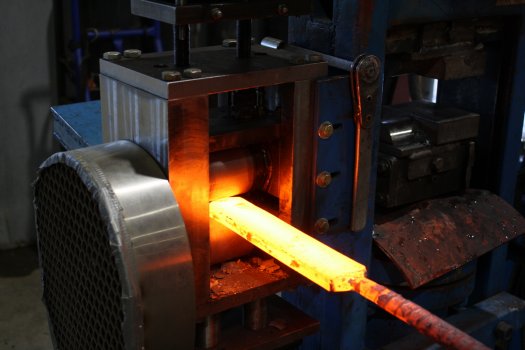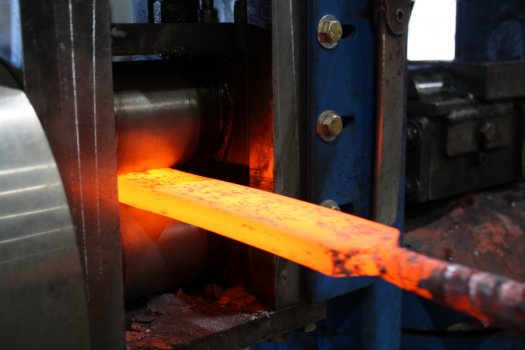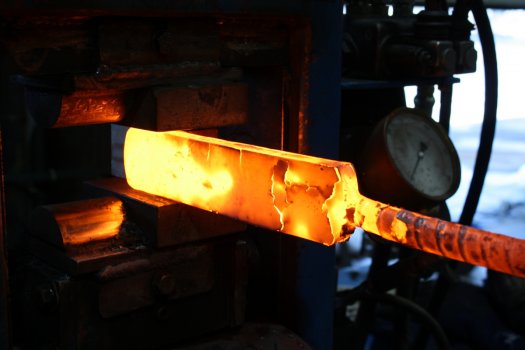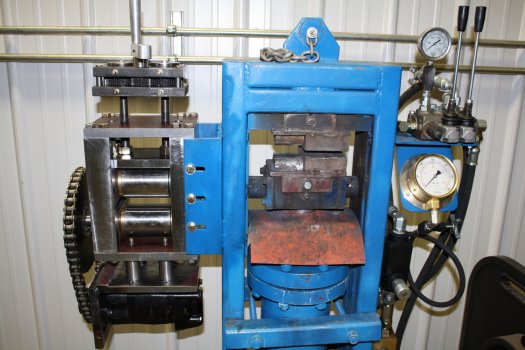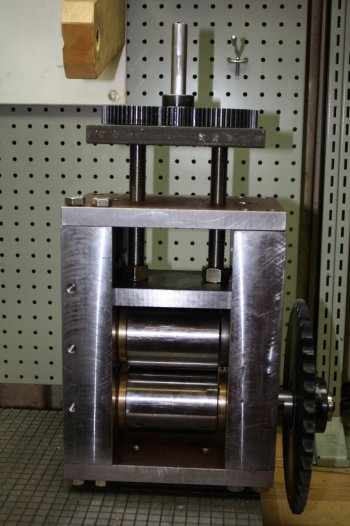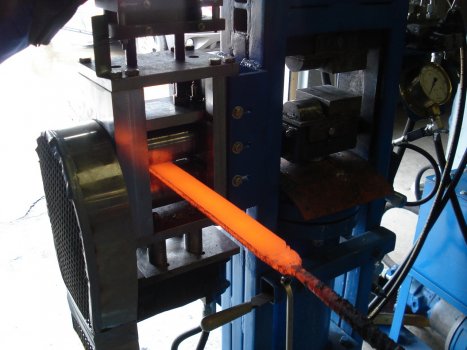You are using an out of date browser. It may not display this or other websites correctly.
You should upgrade or use an alternative browser.
You should upgrade or use an alternative browser.
Rolling Some 420SS and 52100
- Thread starter FORGE
- Start date
FORGE
Well-Known Member
jmforge
Well-Known Member
Very cool. Want to make another one?It is hydraulic driven and I made it.View attachment 80456View attachment 80457View attachment 80458View attachment 80459
FORGE
Well-Known Member
One is enough, nobody would pay what that is worth.
That is beyond impressive. You did some work, and some thinking with that layout. Is the rolling mill driven by a hydraulic motor powered by the same pump as the press? You have a set of valves in the hydraulic lines to the press cylinder that will divert the flow to the rolling mill motor?
I (and I'm sure the other folks would also) LOVE to see a few more photos showing the layout and how it's all connected up.
Again, impressive work and engineering to put that all together.
I (and I'm sure the other folks would also) LOVE to see a few more photos showing the layout and how it's all connected up.
Again, impressive work and engineering to put that all together.
FORGE
Well-Known Member
Yes Ken the pump powers the press and the rolling mill.That is beyond impressive. You did some work, and some thinking with that layout. Is the rolling mill driven by a hydraulic motor powered by the same pump as the press? You have a set of valves in the hydraulic lines to the press cylinder that will divert the flow to the rolling mill motor?
I (and I'm sure the other folks would also) LOVE to see a few more photos showing the layout and how it's all connected up.
Again, impressive work and engineering to put that all together.
The valves on the press operate a regenerative circuit for the press. That means you take the oil from the rod side of the cylinder and introduce it back into the cap end of the cylinder for max velocity and then as the cylinder starts to press the work piece the pressure builds up an a valve shifts diverting the oil to tank and giving max pressing force.
Long story short with the area ratios on this cylinder 6 in bore and a 3 inch rod, even though the pump flow to the cylinder is 3 GPM it moves the cylinder at a rate equivalent to a 12 GPM until the pressure reaches 500 PSI and then it resumes the slower speed.
Here is a picture of the press without the rolling mill and the schematic of the hydraulics that make the whole thing work.
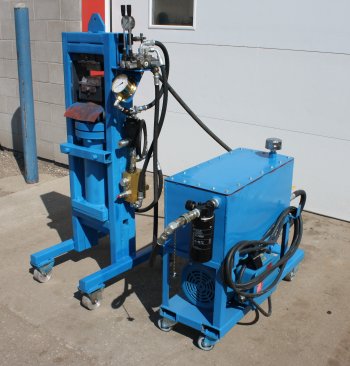
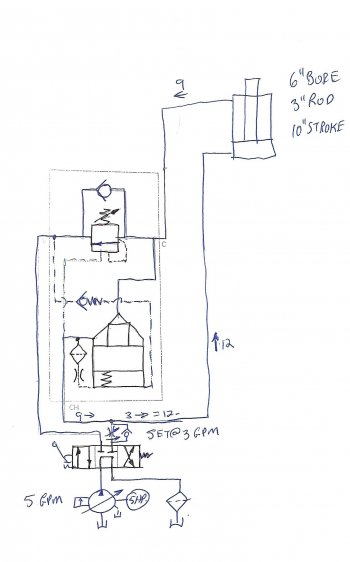
billyO
Well-Known Member
That might not be true....Nobody would pay what that is worth
This might be though..One is enough...
jmforge
Well-Known Member
I remember than somebody out in the Pacific Northwest used to build a big press and rolling mill. Josh Smith had a press for sure and Chuck Bybee had a mill that had both rollers powered IIRC. You could runn both off of one power unit. Bad news is that ten years ago, the pair wiht the power pack would have probably set you back around $15K when you could have gotten a Bowie press AND a 110 pound Say Mak hammer for like $13K! But they were badazz!!!!
Thanks for the info, makes it even more impressive. Looks like you're using a single stage pump, but getting the effect of a 2 stage pump with high volume flow at lower pressure, then the slower 3gpm at high pressure. IMPRESSIVE engineering for sure. What is your max pressure on that 6" cylinder? Got to create a LOTS of tons, at only 2500 psi that's around 35 tons. It will make my 4" ram seem puny.
Good job. I'm still impressed with the rolling mill.
Good job. I'm still impressed with the rolling mill.
billyO
Well-Known Member
Me too!!!!I have had the plans for the McDonald rolling mill for years. Who would you go to if you wanted to have one built? I cant even begin to attempt such a project.
billyO
Well-Known Member
Was that Grant Sarver?I remember than somebody out in the Pacific Northwest
FORGE
Well-Known Member
I could go to 2500 PSI without running out of HP but have got the pump compensator set at 2000 PSI which gives a force of 56,000 lbs which is more than enough to forge.Thanks for the info, makes it even more impressive. Looks like you're using a single stage pump, but getting the effect of a 2 stage pump with high volume flow at lower pressure, then the slower 3gpm at high pressure. IMPRESSIVE engineering for sure. What is your max pressure on that 6" cylinder? Got to create a LOTS of tons, at only 2500 psi that's around 35 tons. It will make my 4" ram seem puny.
Good job. I'm still impressed with the rolling mill.
jmforge
Well-Known Member
Matt WhitmusWas that Grant Sarver?
That's still 28 tons. I've heard folks talk about how 20 tons (and even more) are needed for forging. That had me a bit concerned when I ordered the 12 ton Coal Iron press, then found out it was only a 9 ton press, NOT the 12 ton advertised (they use a 3" cylinder at 2500 psi). After putting a pressure gauge I realized I was only getting 8 ton (2250 psi) from my press and was still amazed how well it forged a billet. The trick is using small dies, only 1.5" wide which makes a 9 ton press work like an 18 ton press with 3" wide dies. I changed to a 4" cylinder.I could go to 2500 PSI without running out of HP but have got the pump compensator set at 2000 PSI which gives a force of 56,000 lbs which is more than enough to forge.
You've got LOTS of power!
billyO
Well-Known Member
Thanks.Matt Whitmus
Edwardshandmadeknives
Well-Known Member
Ah, knifemaking. Where “rolling some 420” still means working with steel. Gotta love it 
jmforge
Well-Known Member
According to Josh Smith circa 2020, he doesn't build them anymore.Thanks.

